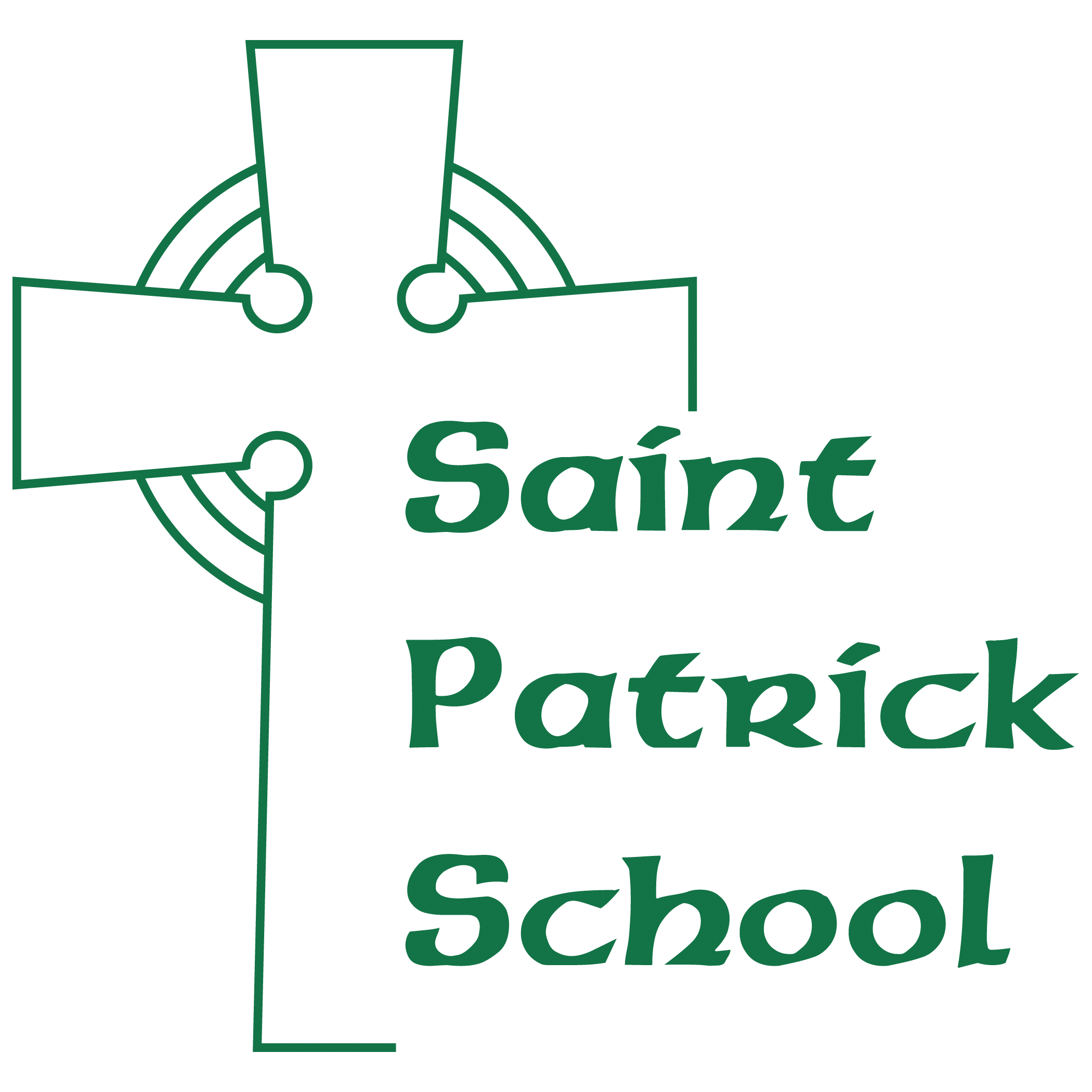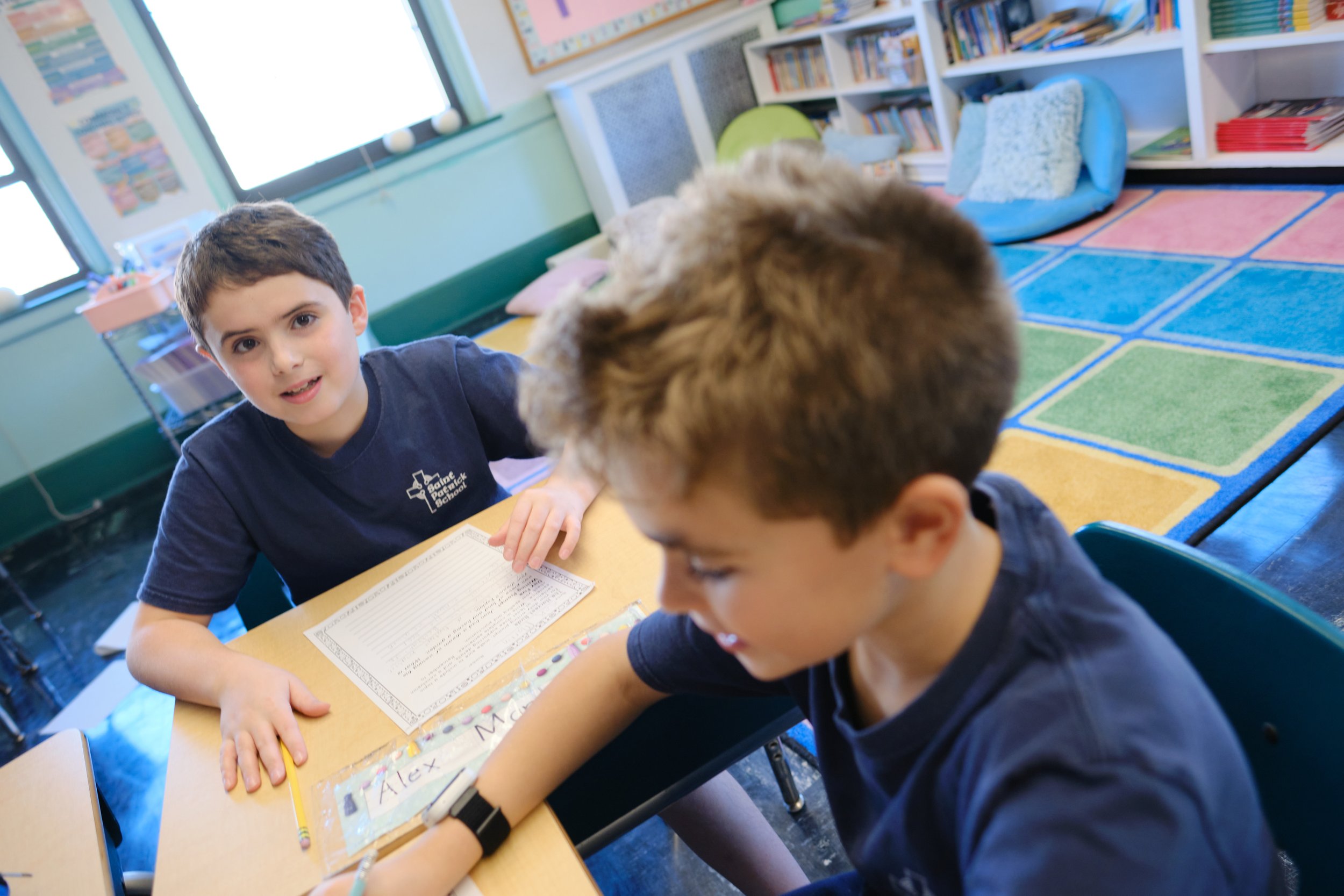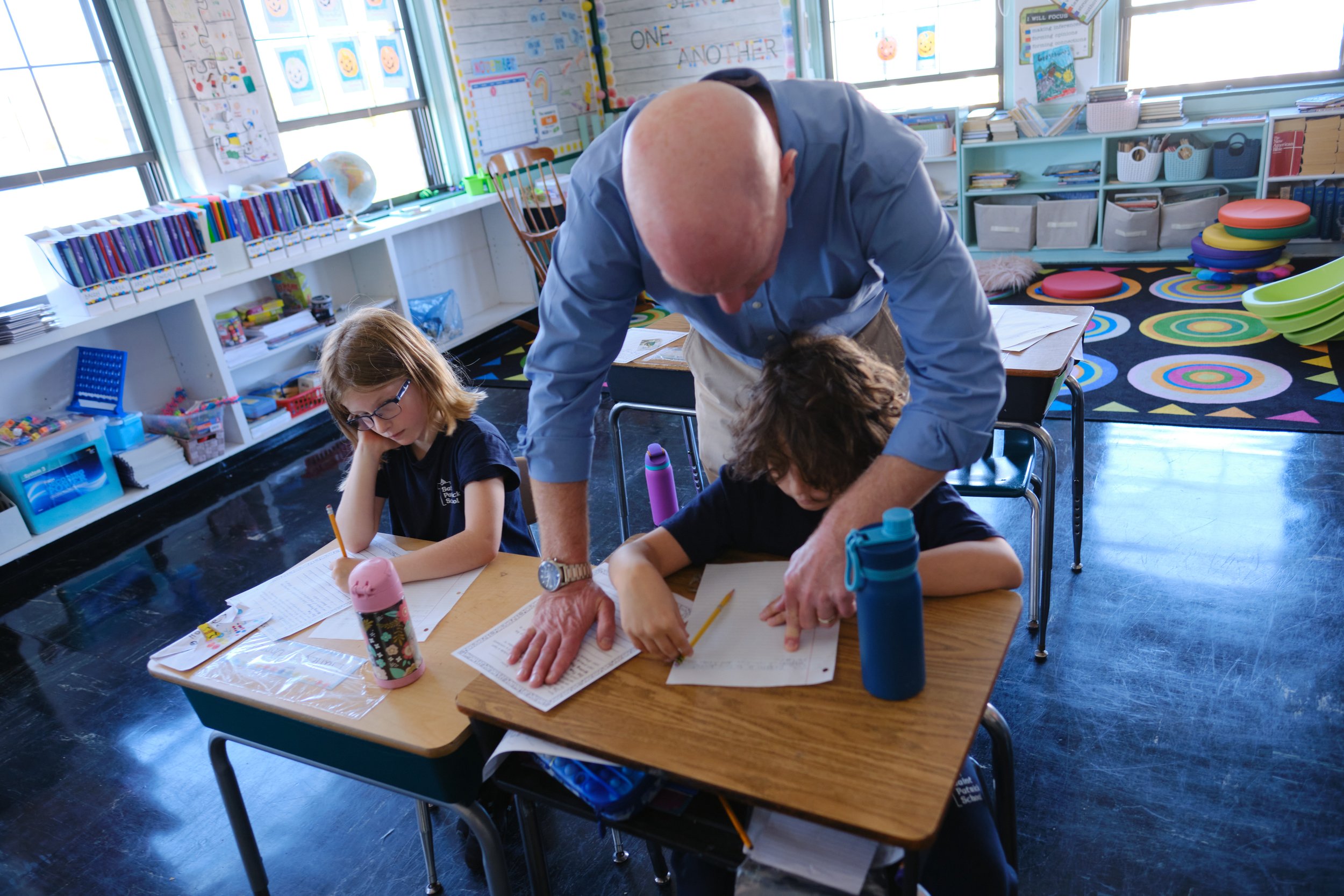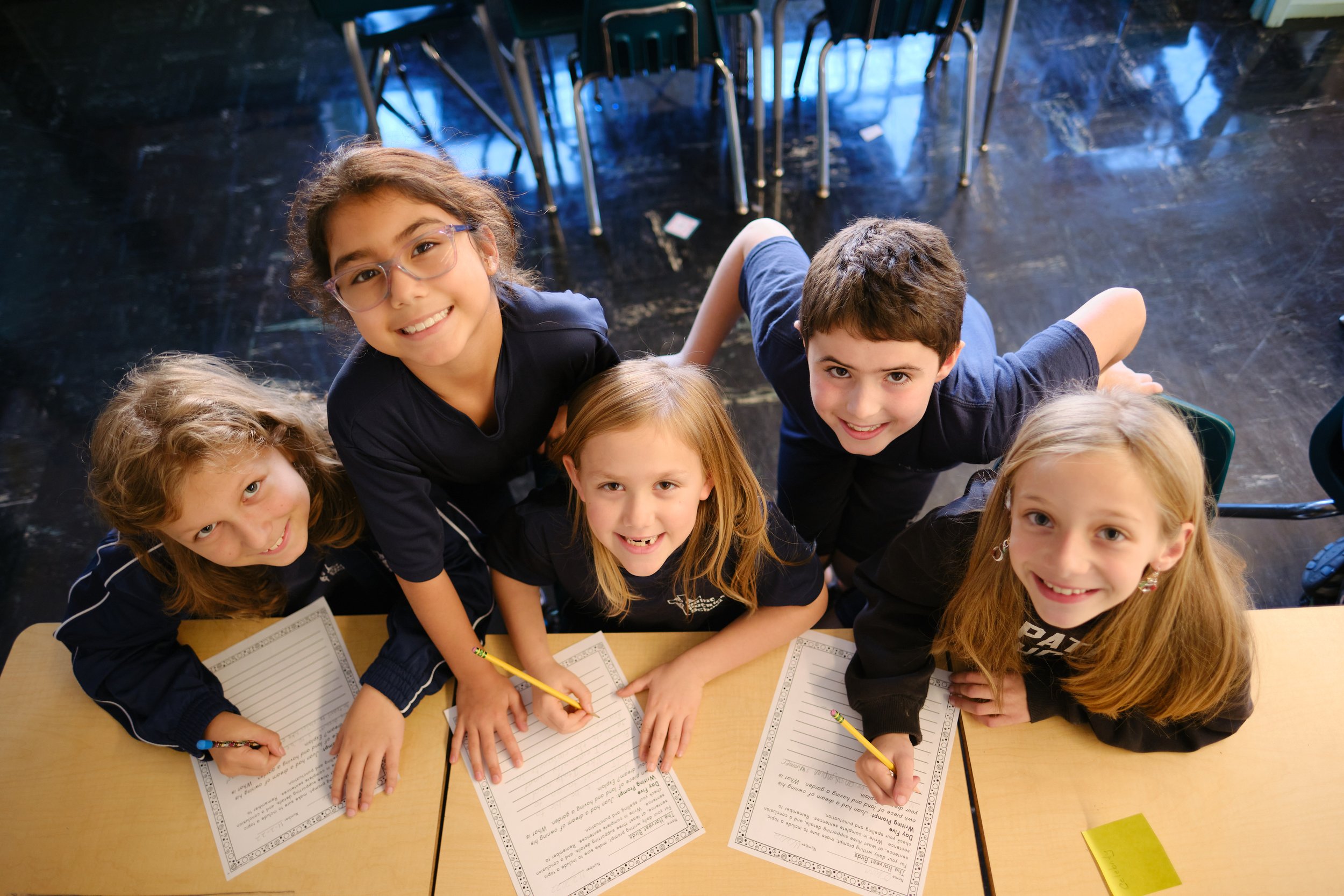Third grade at St. Patrick School is a wonderful and exciting year for a learner. This is when a student moves from learning to read to reading to learn. Reading skills will be used in all of the subject areas. In third grade, the student starts to put the learning pieces together to take on more complicated assignments. The basic skills of first and second grade are now applied to working more as an independent learner as directions become more multi-stepped. This is the next step of becoming a lifelong learner.
+ MATHEMATICS
HMH Math by Houghton Mifflin Harcourt is the text used to support the third grade curriculum. This program is aligned with the math common core standards.
Students will: Perform addition and subtraction within 1000, Represent and Interpret data, Understand Multiplication facts and related strategies, Understand Division facts and related strategies, Understand and compare fractions, Understand time, length, liquid, volume, and mass, understand perimeter and area, understand geometry with a focus on two-dimensional shapes.
+ RELIGION
Blest Are We, published by RCL Benziger, is based on the four pillars of the Catechism of the Catholic Church: What Catholics Believe, How Catholics Worship, How Catholics Live, and How Catholics Pray. The third grade focuses on the Church. Students learn and study about how the Church is one, holy, Catholic, apostolic, and has a mission to the world. Scripture, the foundation of every chapter, leads to a presentation of Catholic doctrine – statements of believe, worship, morality, and prayer. The program includes stories about the Saints and other important Catholic figures designed to inspire and bring to life.
+ Language Arts
Reading and Writing:
Wit & Wisdom is a comprehensive Kindergarten through Grade 8 English Language Arts curriculum developed by and for teachers. Each Wit & Wisdom module centers on the study of rich and engaging texts, curated to build student knowledge of important ideas in the liberal arts and sciences. Wit & Wisdom provides the knowledge-building and standards-aligned integrated instruction essential to literacy success. The curriculum provides the complex texts students need to strengthen reading comprehension.
Spelling:
Journeys’ Spelling by Houghton Mifflin Harcourt is the program that is used to support the third grade spelling program. It continues to reinforce second grade spelling and phonics along with introducing the next level of spelling words. This program correlates with the spelling common core.
In this program, students practice words with: long and short vowels, consonant clusters – beginning, middle, and end of words, plurals, syllable patterns, compound words, double consonants, adding suffixes, diphthongs, soft c, soft g, r controlled vowels, contractions, words with silent letters, homophones, and alphabetical order.
+ SOCIAL STUDIES
Massachusetts, Our Home, by Gibbs Smith, draws on information from local historic sites, historical societies, and museums. Third graders learn about the history of Massachusetts from the time of the arrival of the Pilgrims. They also learn the history of their own cities and towns and about famous people and events in Massachusetts’ history. In addition, they read biographies of prominent Massachusetts people in science, technology, the arts, business, education, or political leadership in order to learn how they contributed to Massachusetts history. Students will be able to identify the New England states, Massachusetts rivers, Native American tribes of the year 1620, as well as map skills of Massachusetts and New England.
+ SCIENCE
HMH Science Dimensions by Houghton Mifflin Harcourt, is the text used to support the third grade science curriculum. It correlates with the third grade Massachusetts Science Frameworks. Students learn about engineering processes, forces, life cycles of plants and animals, living things and their environments, changing environments, fossils, and weather. The students learn through a combination of direct instruction and hands-on activities.
+ SPECIALS
All students participate in specials that compliment the rigorous classroom curricula throughout the school year. Art, Physical Education, Music, STEAM, and Spanish are offered to all students from grades Kindergarten through grade 8.
Students begin to experience the Spanish language 1x per week starting in kindergarten through grade 5. Middle School students take Spanish 3x per week.











